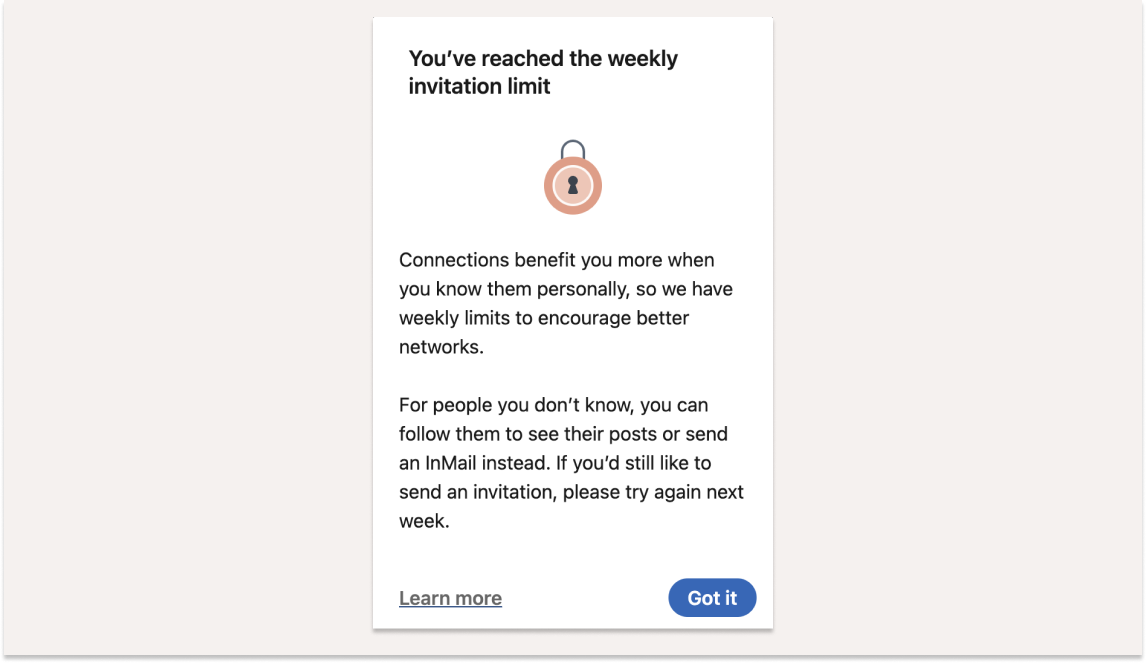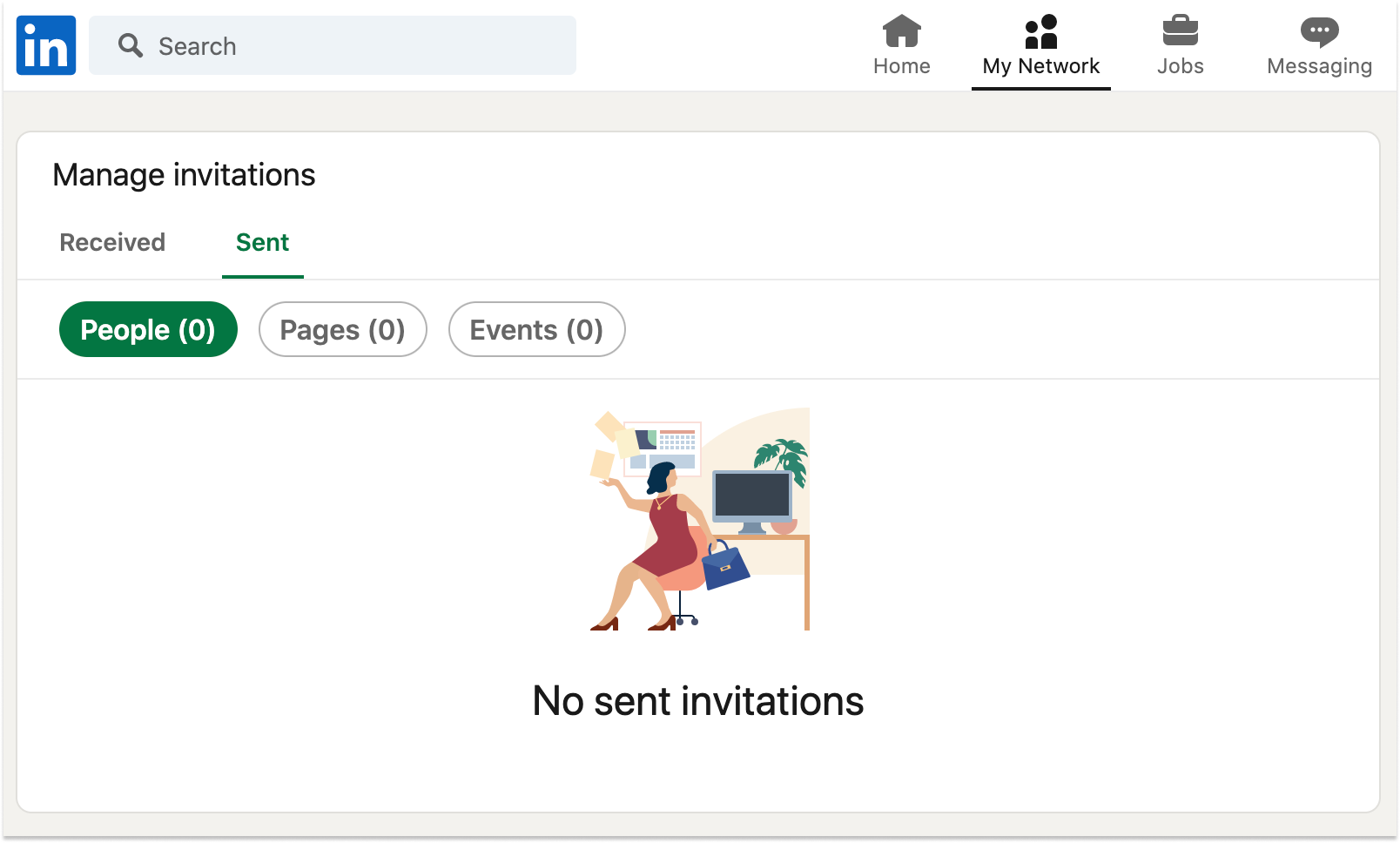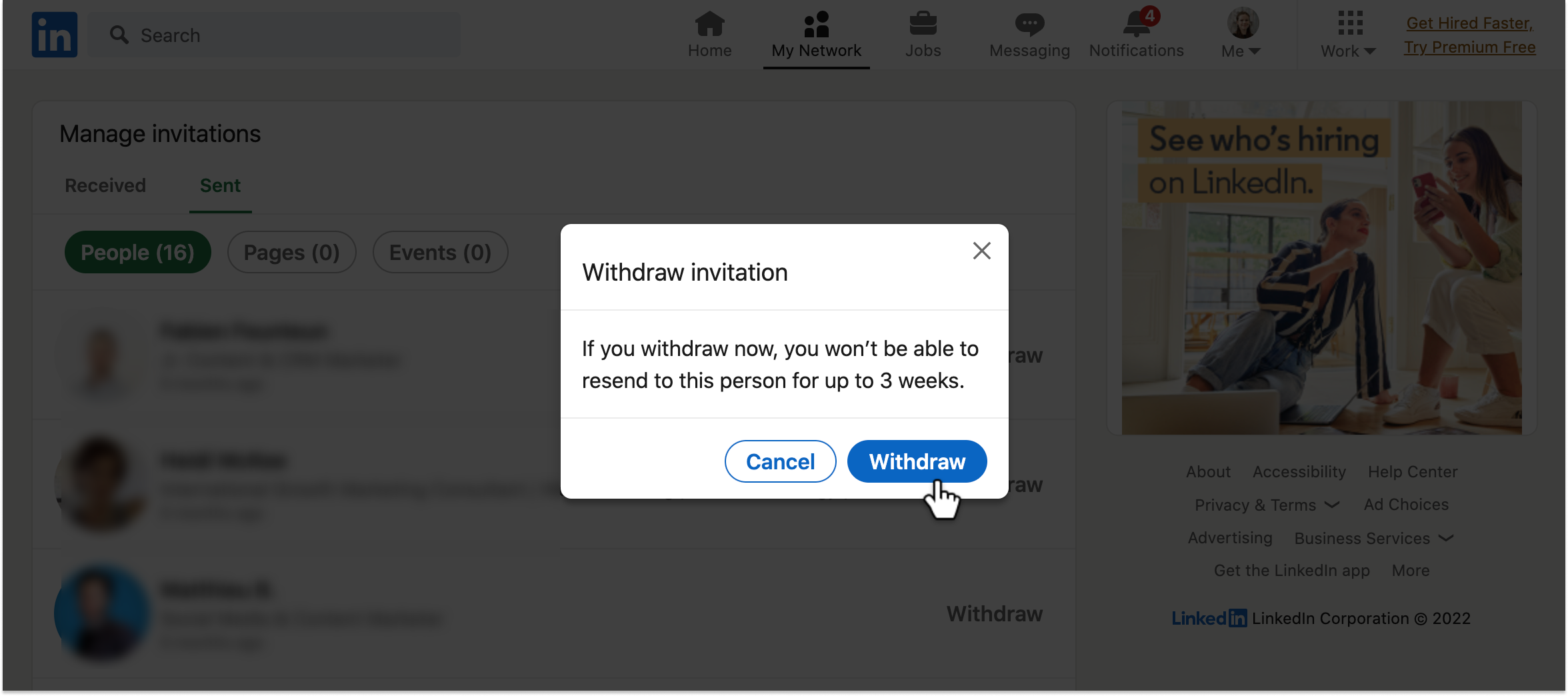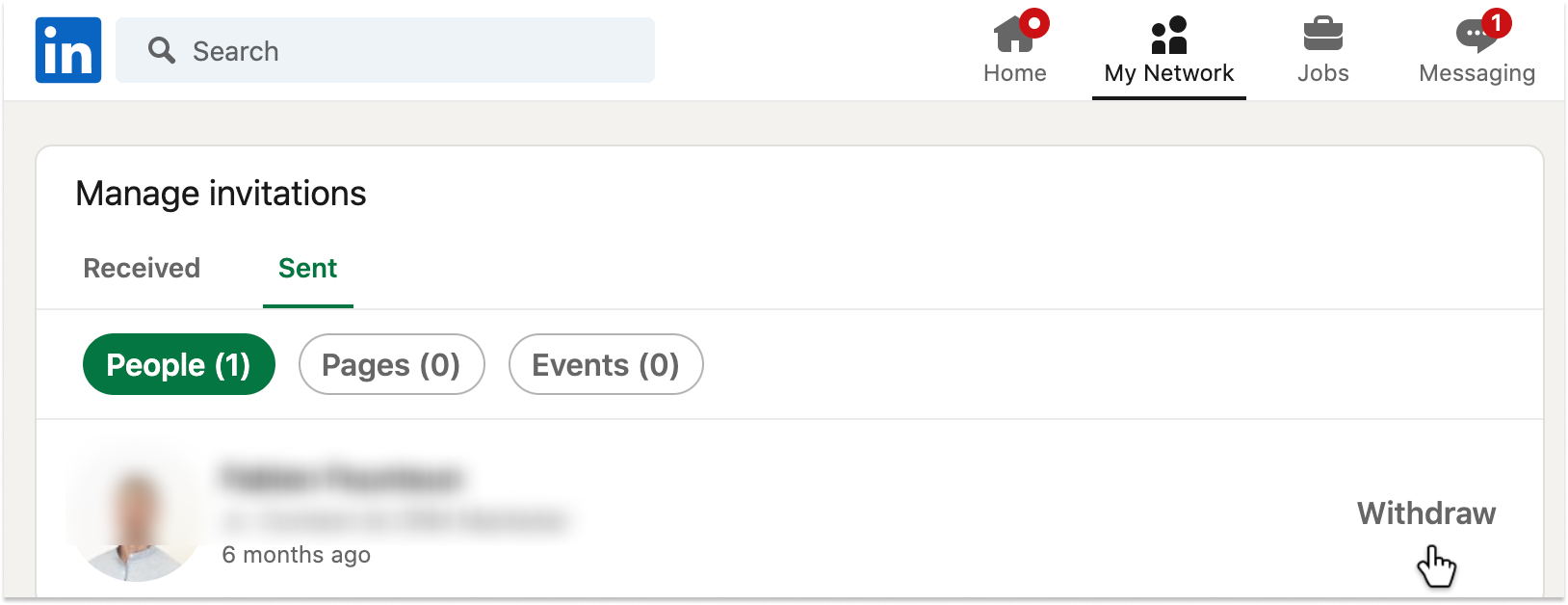How to Withdraw Pending LinkedIn Requests (and Why It’s Important)
How to Withdraw Pending LinkedIn Requests (And Why It’s Important)
Curious about how to withdraw a connection request on LinkedIn? We’ll guide you through the process of canceling a connection request on LinkedIn quickly.
1: Introduction to LinkedIn connection requests
LinkedIn, a prominent professional networking site with a vast user base, allows individuals to connect with other professionals in their field. When a user sends a connection request to another LinkedIn user, it remains as a pending invitation until it is either accepted or disregarded. Seeing pending connections on LinkedIn is crucial for growing one’s professional network and creating new opportunities.
Understanding how to withdraw a LinkedIn request or how to view pending connections is important for a reason. Is it necessary to know the location of the “cancel LinkedIn invitation” button? The simple answer is – yes! And here’s the reason why knowing how to withdraw a request or how to view pending connections on LinkedIn is important.
On LinkedIn, connection requests are just that, requests that recipients can choose to accept or ignore. This means that some users will accept your requests, while others will not.

However, if you are working towards expanding your LinkedIn network, the following issue may arise as time goes on.
In the event that you are adding numerous connections, LinkedIn may have restricted your account’s capacity to connect with others, as demonstrated in the following example where the invitation limit has been reached.


Before we dive into the methods for unsending a LinkedIn request, let’s discuss the significance of knowing this process so that you can promptly resume connecting with new LinkedIn profiles.
2: What is the benefit of withdrawing LinkedIn connection requests?
Canceling pending LinkedIn connection requests is helpful for maintaining a clean and relevant network. Withdrawing pending invitations ensures that users are not left waiting for a response and allows for a more accurate reflection of one’s professional connections. It also prevents a build-up of pending requests, helps see a list of pending connections, and aids in managing the LinkedIn account efficiently.

Knowing how to withdraw a connection request on LinkedIn is very important. Why? Because networking on LinkedIn is a numbers game, and being able to cancel a request will give you an advantage.
Expanding your LinkedIn network to over 5,000 connections has numerous benefits. However, despite a good acceptance rate, many of your requests may go unnoticed. This is when knowing how to cancel a LinkedIn request becomes invaluable.
LinkedIn has established certain guidelines for invitation requests, connections, and followers to ensure a positive user experience:
- The maximum number of connections allowed is 30,000
- There is no limit on the number of followers
- The exact limit for pending invitation requests is unknown
This is why understanding how to retract a LinkedIn request is important. While the exact limit for invitations is not known, it’s best to approach this with caution.
If your LinkedIn network surpasses 30,000 connections, you can still follow others, but that’s all. If you want to add a new contact for communication, you’ll have to delete some less significant connections from your network.
Therefore, it’s important to learn how to cancel a request on LinkedIn. Knowing how to retract an invitation on LinkedIn will allow you to continue sending new invites to potential connections and expand your network.

Additionally, there is a restriction on the number of pending connection requests allowed on your account. The precise limit is not specified, with some sources suggesting it is a percentage of your current connections, while others believe it is a fixed 3,000.
Once you reach this undisclosed limit, you will be unable to add new connections. This is why it is important to understand how to withdraw a connection request on LinkedIn.
In the following section, we will explain the process of manually undoing a connection request on LinkedIn.

3: How to unsend a LinkedIn connection request?
To withdraw a pending LinkedIn connection request manually, users can navigate to their pending requests section and view the list of pending connections. From there, they can select the specific request and choose to cancel it. This process allows users to manage their pending connection requests on LinkedIn efficiently, keeping their network organized and up to date.
Are you in search of the “cancel connection request” option on your LinkedIn account? Don’t worry, we can help! Here’s a 4-step guide on how to cancel your pending LinkedIn requests:
1. Navigate to the “My network” section. Within the “Invitations” section, select “See all.”

2. Next, go to the “Manage invitations” section and select the “Sent” tab. Choose the invitations you wish to cancel and then click on “Withdraw”. This is the process for retracting a request on LinkedIn.

And that’s it! You now have the knowledge to manually withdraw a connection request on LinkedIn.
How can you send another invitation to someone who did not accept your initial request?
You may be familiar with how to retract an invitation on LinkedIn, but what if you wish to send another invitation to the same person?
Revoking an invitation does not return it to a pending status, it simply cancels it. If you want to send another invitation to the person, you will need to click on the connect button. The invitation will be subject to a delay by LinkedIn, to prevent spam, but it will eventually be delivered.





